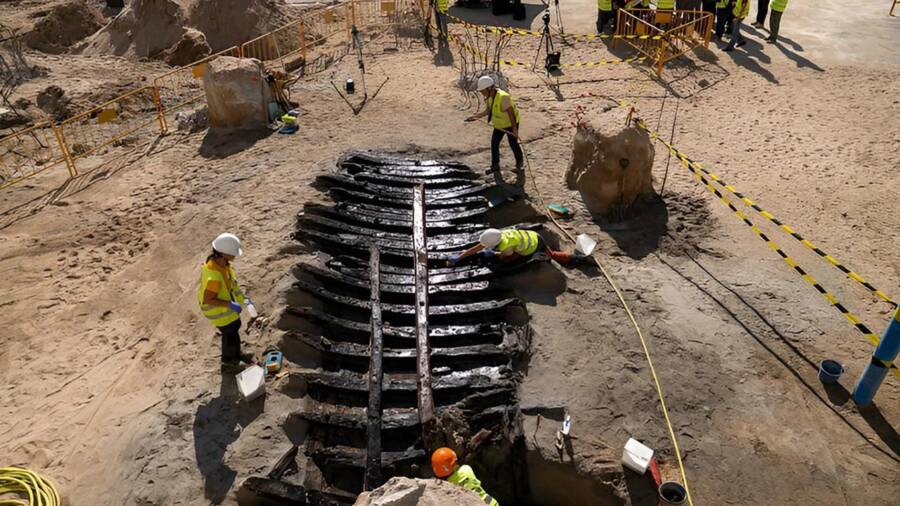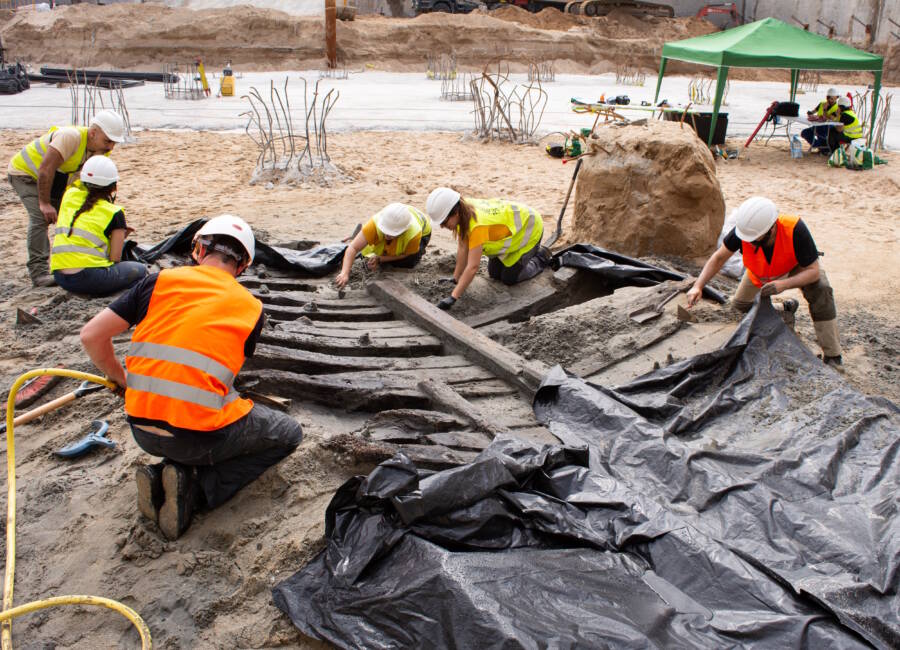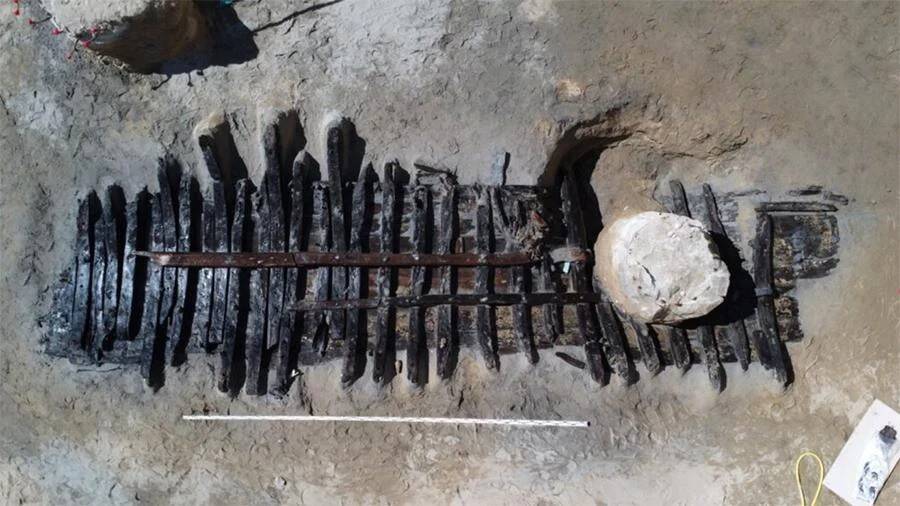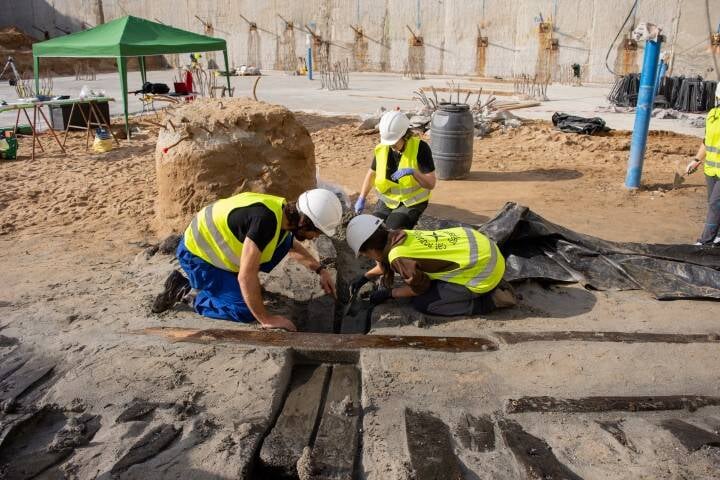Believed to have sunk in a storm during the 15th century, this wooden ship measures 33 feet long and 10 feet wide. Now, researchers are hoping that this rare find can provide insights into the little-understood traditions of medieval shipbuilding.

Barcelona City Council Archaeology ServiceThe medieval ship unearthed in Barcelona, now called Ciutadella I because it was found near Ciutadella Park.
The Spanish city of Barcelona has a long and proud seafaring history. As such, it wasn’t a total surprise when archaeologists uncovered the remains of a medieval boat beneath the city’s former Mercat de Peix (fish market).
Hidden 18 feet beneath the ground for centuries, this shipwreck is now revealing valuable information about both medieval shipbuilding techniques and how the coast of Barcelona has changed over the centuries.
The Discovery Of A Medieval Ship In Downtown Barcelona

Barcelona City Council Archaeology ServiceArchaeologists working on the Ciutadella I shipwreck, which was found beneath the site of Barcelona’s former fish market.
As the Barcelona City Council Archaeology Service explained in a statement, the medieval shipwreck was discovered in April 2025. This 15th or 16th-century vessel was discovered near Barcelona’s former fish market, Mercat de Peix, which is being developed into a center for biomedicine and biodiversity.
A “derelict” — a ship or shipwreck covered by sediment over time — the remains were discovered 18 feet beneath the ground. It’s 33 feet long and 10 feet wide, contains 30 curved wooden ribs and at least seven hull planks, and is held together with both wooden and iron nails.
This kind of construction is known as “skeleton” construction. It was popular during the Middle Ages in the Mediterranean and throughout the rest of Europe starting in the mid-15th century.

Barcelona City Council Archaeology ServiceAn overhead view of the shipwreck, which could now provide valuable information about medieval shipbuilding methods.
The ship, which has now been dubbed Ciutadella I, after the nearby Ciutadella Park, is in very fragile condition. The Barcelona Archaeology Service reports that its wooden frame, soaked with water, has been kept covered with sand to prevent it from drying out and degrading. Eventually, the ship will be transferred to a special facility that can properly protect and preserve it.
But how did the Ciutadella I end up 18 feet beneath the ground?
The Changing Shape Of Barcelona In Recent Centuries

Barcelona City Council Archaeology ServiceArchaeologists working on the Ciutadella I.
As the Barcelona Archaeology Service reports, the discovery of the Ciutadella I illustrates just how much Barcelona has changed over the centuries. After artificial piers were constructed in the city in 1439, and a centuries-old sandbar vanished, the coastline changed dramatically. Coastal drift and storms caused the beach to advance and pushed sand into places that were once covered with water.
The ship, possibly sunk or abandoned, was then submerged. Such an occurrence is rare, and the Ciutadella I is only the second example of a seagoing vessel found in Barcelona. In 2008, a 15th-century ship named the Barceloneta I was found during excavations near the Estació de França train station.
“The discovery of ‘Ciutadella I’ complements and enriches the knowledge obtained with ‘Barceloneta I,'” said the Barcelona City Council Archaeology Service, “offering a more complete vision of the diversity and complexity of medieval maritime activity in Barcelona, and consolidating the city as a key point of the trade routes of the time.”
Elsewhere across Europe in recent years, centuries-old ships have likewise been found buried just beneath the ground. In 2020, three Roman warships were found stuck in clay in Serbia. And in 2022, archaeologists came across a medieval cargo ship in Tallinn, Estonia.
Meanwhile, the ship discovered in Barcelona is not the only discovery that archaeologists have made during excavations at the site. They also found an air raid shelter that was built in 1938 to protect the old Central Fish Market from bombings, structures associated with the 18th-century Bourbon Citadel, and structures associated with the 19th-century Old Fish Market.
And with construction still in progress, there may be more discoveries yet to come.
After reading about the medieval shipwreck that was found in the middle of Barcelona, discover the stories behind nine of the most famous shipwrecks of all time. Then, learn about some of the world’s most historic sunken ships.





